Exidia glandulosa
Scientific name: Exidia glandulosa (Bull.) Fr.
Derivation of name: Glandul- means "gland" and -osa
means "an abundance of." Glandulosa refers to the glands
on the surface of the basidiocarp.
Synonyms: Tremella glandulosa Bull.
Common name(s): Black jelly roll.
Phylum: Basidiomycota
Order: Tremellales
Family: Exidiaceae
Occurrence on wood substrate: Saprobic; forming
irregular masses on decaying deciduous wood; May through
November.
Dimensions: Individual fruit bodies are 1-2 cm wide and up
to 1.3 cm high. Extensive masses of fused fruitbodies may
form large patches.
Description: Brainlike to irregularly contorted gelatinous
fruitbodies, fusing together to form large masses; blackish-
brown to olive-brown or black; surface shiny with numerous
small black-brown glandular dots.
Comments: Figures 4-6 show Trichoderma sulphureum,
an ascomycete parasite of Exidia species.
More information at MushroomExpert.com
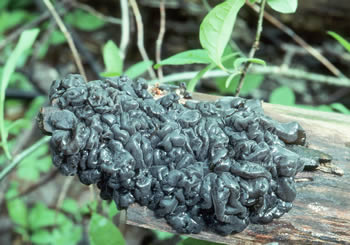
Figure 1. The black, convoluted mass of Exidia glandulosa.
Photo © William Roody.
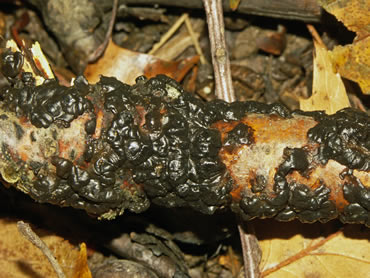
Figure 2. Another view of Exidia glandulosa, just as dark,
just as irregular.
Photo © Dianna Smith.
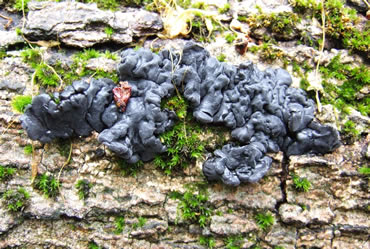
Figure 3. This is a somewhat dry
specimen. Very dry
specimens may appear as a thin black-dotted crust. With
moisture, dry specimens may rehydrate to a gelatinous
state. Photo © Dianna Smith.
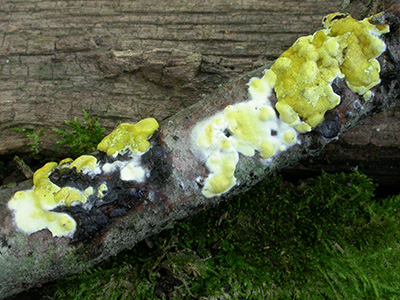
Figure 4.
The yellow fungus growing on Exidia glandulosa is
Trichoderma sulphureum (synonym Hypocrea sulphurea),
an ascomycete. Photo © Gary Emberger.
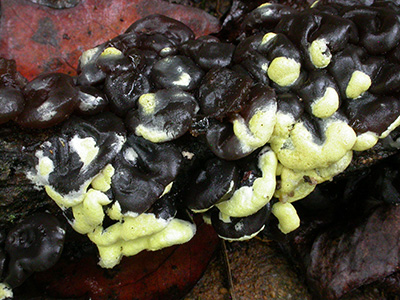
Figure 5.
Trichoderma sulphureum parasitizing Exidia
glandulosa. T. sulphureum also seems capable of saprotrophic
growth, occurring on dead wood in the absence of external
evidence of Exidia spp.
Photo © Gary Emberger.
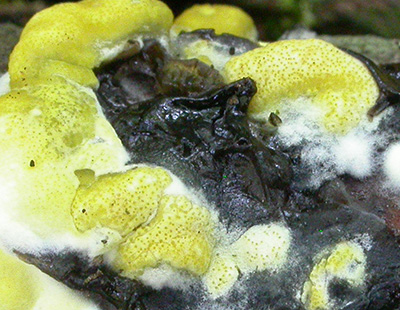
Figure 6. The numerous small dots on the yellow tissue mark
the location of perithecia. Photo © Gary Emberger.